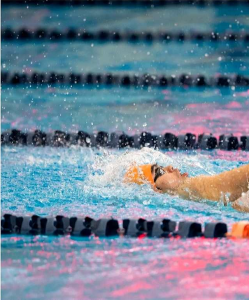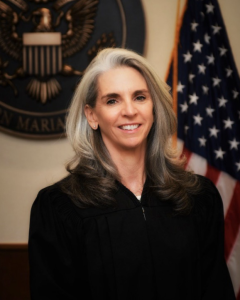A pioneer in Oriental medicine
It’s no secret that we have a lot of Asian people in the Commonwealth and many have their own healing practices and remedies. Foremost among these is Oriental medicine, which has many different branches and which has only recently been accepted by Western medical institutions.
For years, the AMA tried to ban acupuncture but when faced with the fact that it worked, they backed down. Now acupuncture, as well as other forms of Oriental medicine, is finding its way into Western hospitals and clinics.
In the late 1960s, acupuncture, Chinese herbs, Tui Na and Qi Gong were virtually unheard of—let alone practiced—outside China. However, a practitioner, Stuart Watts diligently pursued traditional Chinese medicine, or TCM, and its various components, in order to bring them into application and acceptance in the West.
Watts founded several of the best Oriental medical schools in the county, and has also helped to formulate impeccable standards in the education of traditional Chinese medicine, as well as its clinical applications. Stuart Watts is perhaps the key figure in America who has brought traditional Chinese medicine and its remarkable healing systems into mainstream America.
Stuart Watts was one of the first important people I interviewed for Alternative & Complementary Therapies. What he has to say is fascinating because the approach is so different from our conventional medical models. Although my original article appeared in 2000, it is still relevant because Chinese and Oriental medicine have remained unchanged for centuries.
Stuart Watts:
“I have spent my whole life developing standards for a profession that didn’t have any. Those standards have been realized in establishing schools of Oriental medicine—and determining what a quality school is; the establishment of acupuncture as a profession in the United States; and the establishment of Oriental body work, such as shiatsu and Tui Na, as a valid medical profession in the U.S.”
What exactly is Oriental medicine? And how is it different from traditional Chinese medicine?
“Oriental medicine includes five components: acupuncture, herbs, massage, diet/nutrition and Qi Gong/Tai Chi. Binding all of these is communication, because the practitioner needs to know what is going on with the patient and to make informed decisions and diagnoses.
“Oriental medicine encompasses traditional Chinese medicine as well as other forms of treatment and styles such as Korean hand acupuncture, or “Twelve by Twelve” acupuncture. Although they are Oriental in their approach, they are what is called a “family lineage” style, and not part of TCM, or traditional Chinese medicine, per se.
“What is important to remember for all of these components is that they are based on a meridian system. It is generally believed that there are 12 meridians in the body; but there are sub-breakdowns into a total of 71 meridians.
“A meridian is a pathway of energy flow, and though they can’t be seen by CAT scans or x-rays, they are there. And energy, or Qi, is continually flowing along these meridians. There are major points, junctions, along the meridians where the energy “pools” and those are the acupuncture points. By manipulating a point, whether it’s by massage, or a needle or some kind of stimulation, one is able to move the energy along. As a result a more harmonious balance has been created in the body because the energy is now flowing freely.
“Another key component to TCM is the concept of either tonifying (building up) or sedating (quieting down). Treatment is either one or the other, such as increasing heat in the body or reducing it, as an example. But that is the purpose of diagnosis: to determine if the conditions are hot or cold, in excess or deficient.
Diagnosing the patient
“There are eight parameters: The condition is either yin or yang, external or internal, hot or cold, empty or full. Usually it’s a combination; and it’s fairly easy to determine if the disease is on the inside or the outside.
“If it’s an external disease, then it has a quick onset. If it’s internal, then it’s a slow-occurring disease, more of a chronic nature.
“If the condition is hot, it’s easy to see: the tongue is red, the pulse is fast. If the condition is cold, the tongue is pale, maybe with a white coating, and the pulse is slow. Then the practitioner has to determine which meridians are being affected, and then the treatment is done by manipulation of various points along the meridian. And that is how the practitioner re-establishes harmony in the patient.
“What you must remember is that a traditional Chinese medicine practitioner does many things, and not just acupuncture and herbs They usually include bodywork, they talk about your diet and maybe prescribe a form of exercise. Ideally, the TCM practitioner today is well trained in all five branches of Oriental medicine. So today, if you go see a certified acupuncturist, you are getting a lot more than just needles. As a matter of fact, Oriental bodywork is a key component also, and we are teaching this in our schools.
“The treatment of the human body/mind/spirit, including the electromagnetic or energetic field, which surrounds, infuses and brings that body to life, by pressure and/or manipulation. Shiatsu and acupressure are based upon traditional Chinese medical principles for assessing and evaluating the energetic system and use of traditional Asian/Oriental techniques and treatment strategies to primarily affect and balance the energetic system for the purpose of treating the human body, emotions, mind, energy field and spirit for the promotion, maintenance and restoration of health.
“Methods of assessment and evaluation may include the Chinese Four Pillars of examination as follows: observation, listening, asking and touching. Assessments are based primarily on traditional Chinese medicine parameters relating to the balance and circulation of the five essential substances. Qi, Jing, Shen, Xue and Jin-ye. Individuals are certified at an entry level in the field by the NCCAOM (National Certification Commission for Acupuncture and Oriental Medicine).
“Treatment may include, but is not limited to, the following: touching, pressing or holding of the body along meridians and/or on acupoints, primarily with the hands, stretching, external application of medicinal plant foods, heat or cold, dietary and exercise suggestion. Cupping, guasha, moxibustion and other methods/modalities may also be used by properly trained practitioners.”
It might be a wise idea for our CHC to have a Oriental medicine practitioner on call, if only for the Asian patients who might prefer to have treatment options they’re familiar with.





I was talking with a doctor friend about this subject. His view is that many Chinese are developing a preference for Western medicine.
Another doctor friend has a more embracing opinion: “Whatever works.”
The closest thing we have in the West would be a Naturopathic Doctor, ND. Many of them form partnerships with acupuncturists and chiropractors to provide, “whatever works.” They have a holistic approach that starts with nutrition and supplements.
If we’re talking about a chronic disease, I would visit the ND, not the MD. If you’re in an accident with blunt force trauma requiring surgery, then of course see the MD. That is their domain.
As usual, you are correct. Traditional “white coat” medicine is best in three areas only: ER care. infectious disease and antibiotics. ND’s take the field for everything else.
You are correct. Glider’s ten bad foods is a must see on youtube.
Having been diagnosed with type 2 diabetes I was getting tired of feeling crappy from all the prescription meds so I did some research and, for the most part, fired my doctor. I went back to him three months later for his analysis of my blood work. He was stunned that my blood work came back not improved, but perfect! When asked what I did, I told him I stopped taking all of his prescribed meds and started eating meats, fat, cheese, butter, six eggs/day and lots of salt. I also told him of plant derived minerals and the 10 bad foods to avoid, (Dr. Glidden). Unfortunately, he wasn’t all that interested.
The combination of ignoring the MD’s advice on diet, avoiding the 10 bad foods and supplementing with plant derived minerals has probably saved my life.
For those who don’t know the ten bad foods they are,
1 – 4. Wheat barley rye and oats, (gluten).
5. Fried foods.
6. Oil in a bottle. Even olive & coconut oil.
7. The skins of baked potato and and baked sweet potato.
8. Carbonated beverages during meals.
9. Over cooked meats, (rare or med rare OK).
10. Meats preserved with nitrates or nitrites, (sodium nitrate).
WARNING! Before you fire your doctor, (like I did) you should check with your doctor first…….